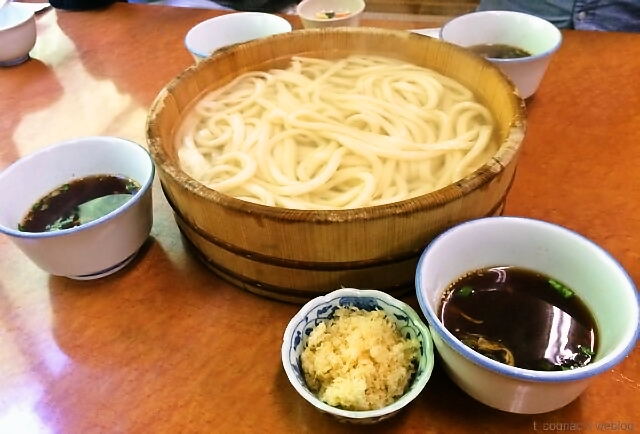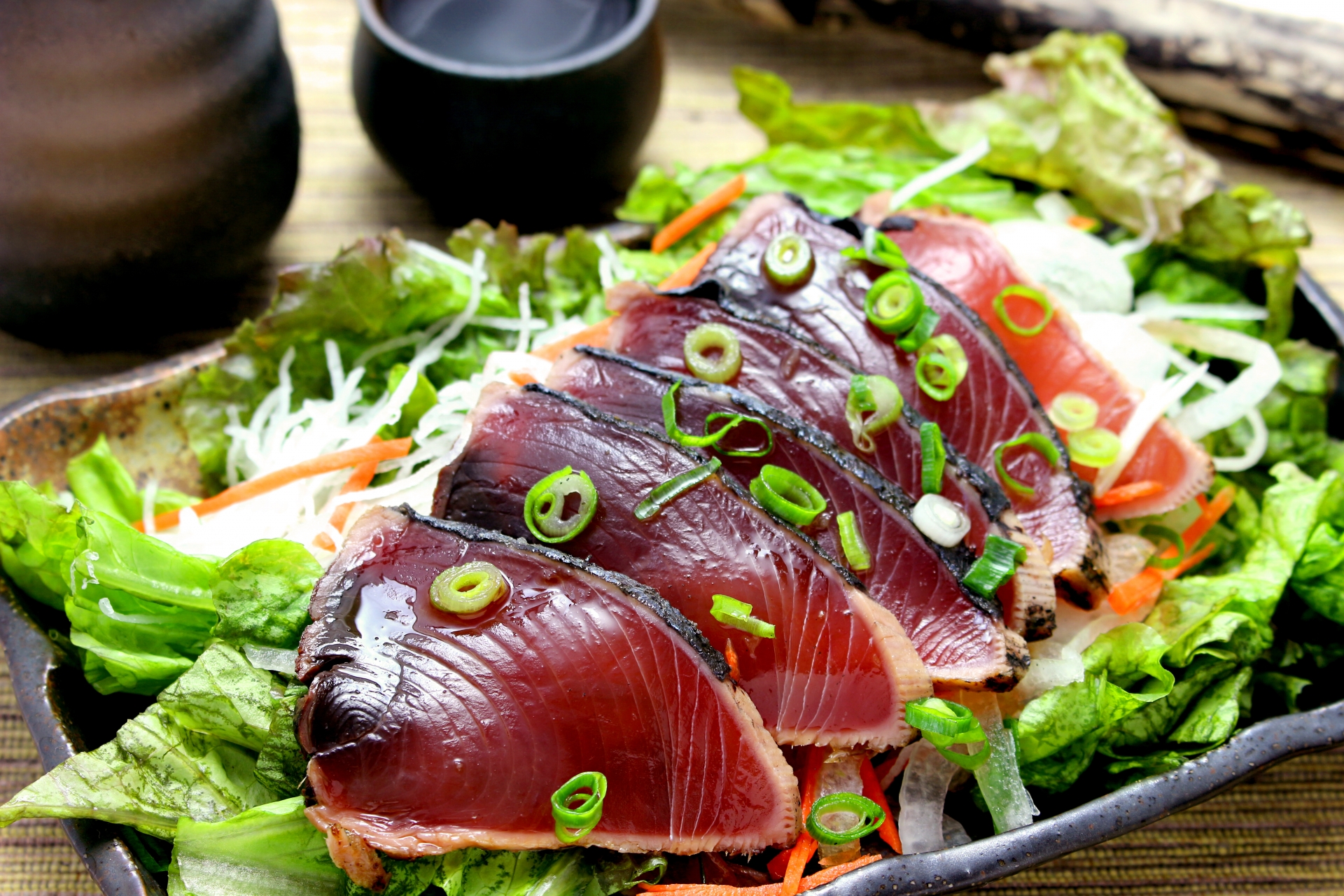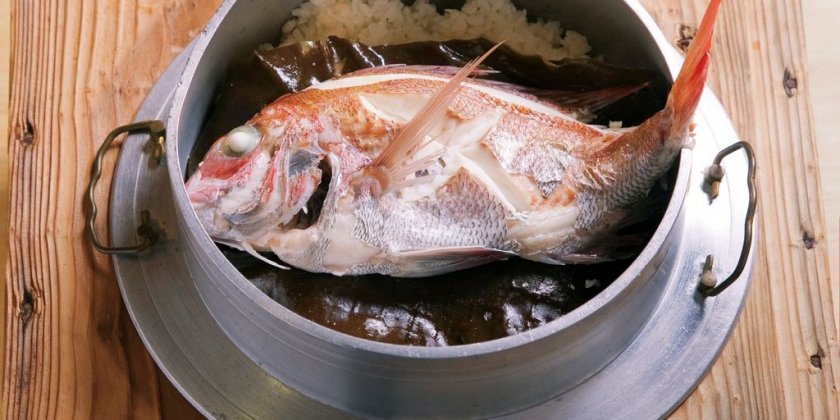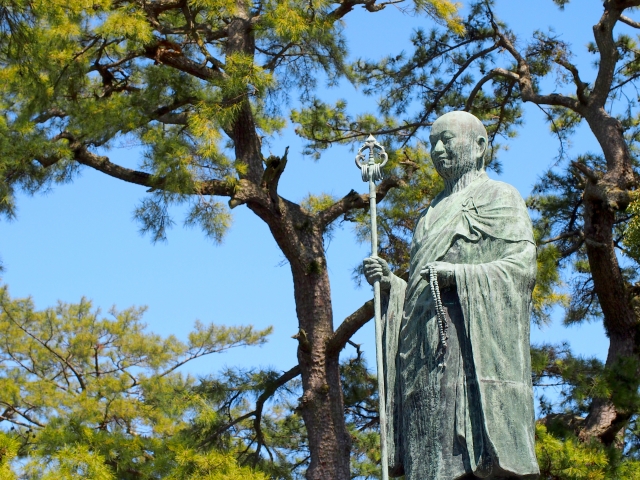Now, it is popular among tourists from outside of Japan to pilgrimage “ohenro” for the purpose of visiting power spots and promoting health.
The gourmet of each place is a part of Henro which follows the footsteps of Kobo Daishi (Kukai) and goes to the 88 temples.
In this article, we will introduce you to the order of pilgrimage about local gourmets that you can enjoy on a pilgrimage route.
Famous food “Taraikodon” in Awa City, Tokushima Prefecture

Image source : https://tabelog.com/tokushima/A3603/A360301/36003886/
Awa City, Tokushima Prefecture is a peaceful city surrounded by mountains and the sea. Here, you can enjoy the local gourmet called “Tarai-udon”.
Tarai-udon is a very simple menu that just put the boiled udon into the traditional Japanese wooden chopsticks “Tarai”.
It is Japanese style to eat elastic thick noodles quickly with soup, ginger and green onion.
As udon is contained in a large amount in a tub of 20 cm or more in diameter, it is excellent for eating.
Before going around the pilgrimage, it is a good idea to eat Tarai-udon for energize your body.
Enjoy the fresh “seared bonito” in Kochi

Kochi Prefecture is famous for its bonito. When your pilgrimage is the 24th place, you will be tired. Then eat seared bonito in Kochi, get plenty of vitamins, and charge energy.
Bonito is a thick and elastic fish that is compatible with alcohol.
Combine it with myoga, green onions, garlic, and soy sauce to enjoy its refreshing taste.
For those who are not good at eating it raw, some dishes are cooked.
Special dish of Ehime, rice bowl of red snapper (Taimeshi)

Uwajima Taimeshi
Image source : https://www.sk-michinoeki.jp/gourmet/565
After your pilgrimage is over 40, you will arrive at Ehime, your return point.
In Ehime Prefecture, “Tashimeshi (red snapper rice bowl)” is famous for serving red snapper with rice, and it is so popular that there are people who want to eat from all over the country.
In contrast to thick and elastic bonito, the red snapper is characterized by its delicate and elegant taste.
There are two main ways to eat Taimeshi.
The first is Uwajima Taimesi, which is a combination of raw egg and sauce with sashimi of red snapper, and the second is Matsuyama Taimesi, which has grilled red snapper and kelp soup.

Matsuyama Taimeshi
Image source : https://www.iyokannet.jp/feature/tai/taimeshi
Both are excellent, so it would be fun to eat them and compare them.
Speaking of Kagawa, the local “Bukkake Udon”
 Image soure : https://www.my-kagawa.jp/photo/10000409
Image soure : https://www.my-kagawa.jp/photo/10000409
When your pilgrimage becomes the last spurt, the final dish is the local cuisine of Bukkake Udon in Kagawa Prefecture.
We first introduced Tokushima’s traditional noodles, but the national reputation is higher for Kagawa’s Bukkake Udon.
It is so famous that Japanese people associate “Udon = Kagawa prefecture”.
This dish is also very simple. Put the soup in a thick noodle with stiffness, and combine it with soy sauce and other flavors such as green onion and ginger.
It’s cheap, quick to eat and satisfying, so it’s a good local dish to end the journey.
Summary

Kobo Daishi figure of Zentuji Temple
You can visit a lot of power pots by going to the pilgrimage route, but you can also experience the traditional regional cuisine of each region at the same time.
Let’s taste the local gourmet well to make memories of a good trip.

